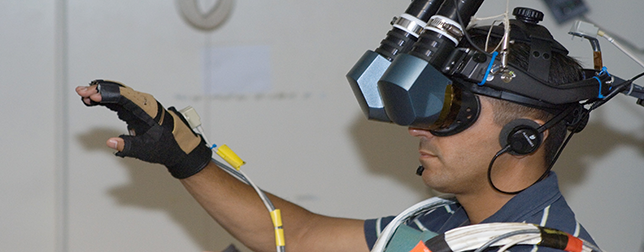Kessler Foundation, a leader in rehabilitation research, has collaborated with Virtualware Group, a leading business group in immersive and interactive technologies, to produce a virtual reality (VR) based treatment option for spatial neglect in stroke patients.
Spatial neglect is a condition that normally occurs after a person has a stroke where the patient has difficulty reporting or responding usually in the contralesional space. The condition is in 50% of stroke patients and 30% of patients with traumatic brain injury. Spatial neglect can hamper treatment outcomes, extend hospitalization time, and increase risk of falls and injuries.
The new VR-based treatment called VR-SRT System, is a unique intervention that leverages 3D virtual environments for immersive training settings to magnify health improvement and work in stroke patients with spatial neglect.
Read more Implantable Device to Deliver Drugs to Pancreatic Cancer Tumors
“The VR-SRT System is based on established theories of neurorehabilitation approaches for spatial neglect. Making the treatment game-like will improve patient engagement and motivate the patients to complete treatment regime while receiving rehabilitative benefits,” notes Dr. Peii Chen, co-director of the project and senior research scientist in Stroke Rehabilitation Research at Kessler Foundation. “As VR hardware and software become more affordable and accessible, novel therapy paradigms like the VR-SRT System will be at the forefront of rehabilitation, facilitating treatment delivery, improving outcomes, and reducing the burdens on individuals, families, and society.”
The goal of the system is to enhance control of spatial attention and awareness in the body via an immersive training process that redesigns and readjusts visual and motor modalities in the virtual 3D world. The VR-SRT System employs the patient’s visual system through stimuli conferred in a head-mounted display, while at the same time engaging the patient’s motor scheme through head and positional tracking and a marker-less hand-tracking device.
Read more Designing Exoskeletons to Interact with Humans
According to Chen, Virtual Reality is becoming more common and less expensive, generating opportunities to utilize it in novel ways.
Currently the ultimate objectives of the software aren’t set in stone and will keep changing with the development. Each new prototype patients and clinicians will come to the lab and give feedback, according to Chen. But she says the technology offers a chance to do something new that traditional therapists can’t.
About Virtualware
Virtualware is a world technology company known worldwide for its expertise in turn-key formulas for immersive and interactive technologies including virtual reality, augmented reality, immersive training, gamification, and interactive hardware manufacturing. The company has a comprehensive portfolio of work across the entire gamut of industry and is a CE-certified medical device manufacturer. Virtualware offers bespoke immersive digital solutions in numerous industries. The company is part of the Virtualware Group which employs 70 people in its offices in Bilbao and Madrid, in Spain, United Kingdom, Mexico and Chile and has a dedicated R&D lab focused on collaborative projects.













